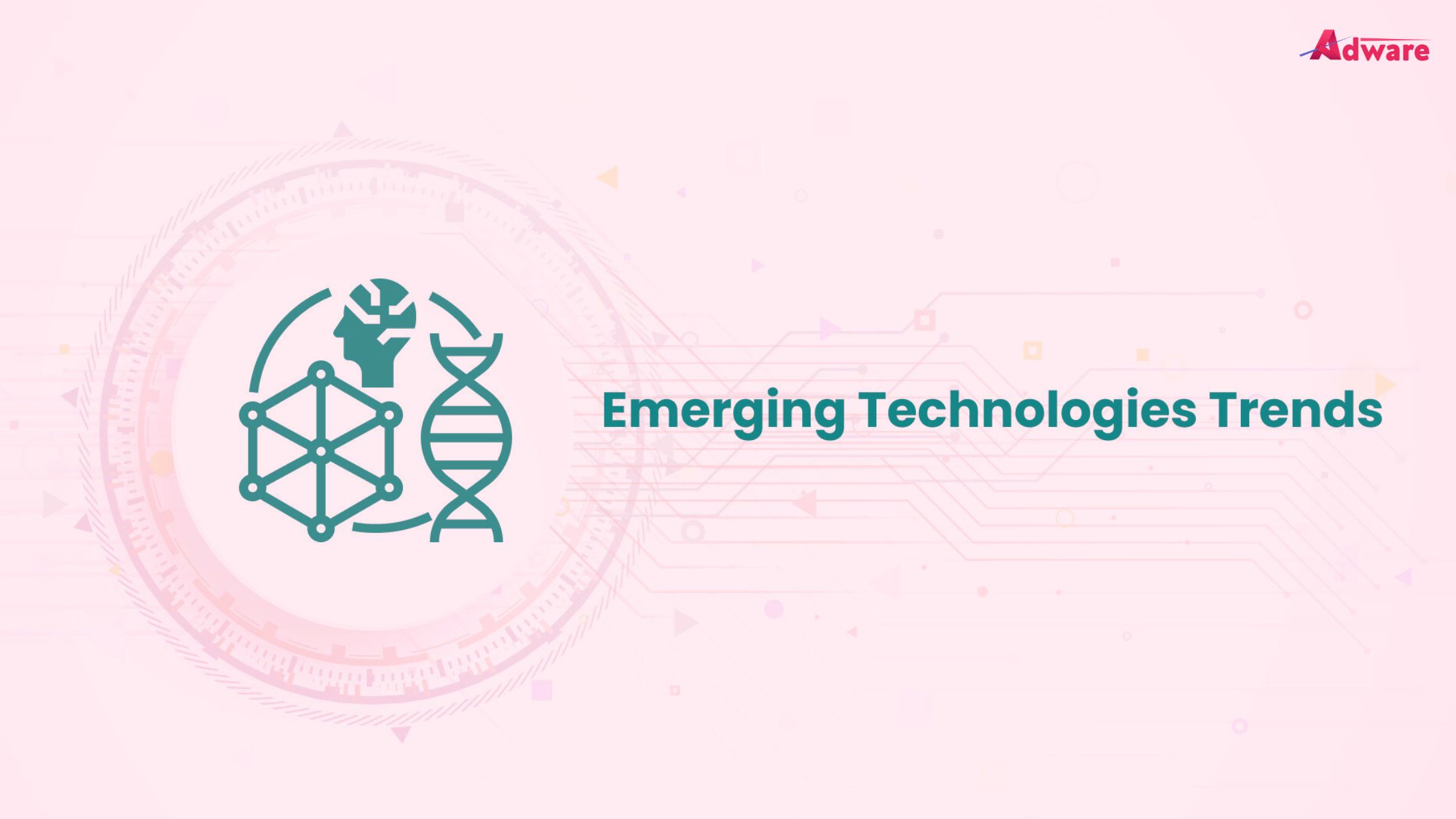What is Emerging Technology?
The term "emerging technology" is typically used to describe novel technologies, but it can also encompass the ongoing advancement of existing ones. It commonly denotes technologies that are presently in development or anticipated to become accessible within the next five to ten years. These emerging technologies have the potential to assist organizations in expanding their capabilities as needed, enhancing their resilience, reducing the need for substantial infrastructure investments, and enabling the swift and secure deployment of solutions. These emerging technologies not only have the capacity to generate substantial social or economic impacts but also open up fresh avenues for addressing business challenges.
Emerging Technologies such as:
Artificial Intelligence (AI)
Data Science
Machine Learning
Deep Learning
Robotic Process Automation (RPA)
Blockchain Apps
Internet of Things (IoT)
Virtual Reality (VR)
Augmented Reality (AR)
Mixed Reality (MR)
Low-code and No-code
Cloud Computing
Artificial Intelligence:
Artificial Intelligence, often abbreviated as AI, is a branch of computer science and technology that focuses on creating computer systems and software capable of performing tasks that typically require human intelligence. These tasks encompass a wide range of activities, such as problem-solving, learning, reasoning, understanding natural language, and making decisions.
AI systems use algorithms and data to analyze information, recognize patterns, and make informed decisions or predictions. There are various subfields within AI, including machine learning, natural language processing, computer vision, robotics, and expert systems. These subfields aim to develop specific capabilities within AI systems.
AI has a diverse set of applications across different industries, including healthcare, finance, autonomous vehicles, customer service, and more. It continues to advance rapidly, with ongoing research and development pushing the boundaries of what AI systems can accomplish.
Characteristics/meaning of AI
1. Is the intelligence exhibited by machines.
2. Is based on the premise that intelligence is not “real” or “human”.
3. Mimics cognitive functions exhibited by humans.
Artificial Intelligence has three stages:
1. Artificial Narrow Intelligence [ANI] - 2015
Artificial Narrow Intelligence [ANI] is limited to one or two functional areas for recognizing an object, it is not self-aware or self-conscious, and it appears to be making decisions, but it is the statistic/maths in action in the background.
2. Artificial General Intelligence [AGI] - 2022
Artificial General Intelligence covers more than one functional area, such as reasoning, problem-solving, abstract thinking, etc.
3. Artificial Super Intelligence [ASI] - 2050
Artificial superintelligence [ASI] is expected to surpass human intelligence in 2050.
Artificial Intelligence: At a Glance
Some Applications of Artificial Intelligence
Product Analysis
Enables companies to leverage data to reveal user engagement with products and services.
Image Recognition
Recognizes objects, places, people, and actions in an image.
Speech Recognition
Allow humans to use their voice to communicate with software.
Language Translation
Translates a word or sentence from one language to another
What is Data Science?
Data Science is an interdisciplinary field that combines various techniques, processes, algorithms, and systems to extract meaningful insights and knowledge from large and complex datasets. It involves the use of scientific methods, statistics, computer science, and domain knowledge to analyze, interpret, and derive valuable information from data.
Key aspects of data science include:
Data Collection: Gathering and acquiring data from various sources, such as databases, sensors, websites, and more.
Data Cleaning and Preparation: Cleaning, organizing, and structuring data to make it suitable for analysis.
Data Analysis: Applying statistical, mathematical, and machine learning techniques to explore data, identify patterns, and extract insights.
Data Visualization: Representing data visually through charts, graphs, and other visual aids to make complex information more understandable.
Machine Learning: Using algorithms to build predictive models and make data-driven predictions or decisions.
Data Interpretation: Drawing conclusions and actionable insights from the results of data analysis.
Data scientists work on a wide range of problems and applications, from business analytics and recommendation systems to healthcare research and fraud detection. They play a crucial role in harnessing the power of data to inform decision-making and solve complex problems in various domains.
Data Science Components
a) Data Science Components means are the base subjects for understanding Data Science
b) We need to know Mathematics, Statistics, and Data Engineering subjects to learn Data Science
c) We apply different Machine Learning algorithms to the data, and as a result, we get different analytical charts and data analysis reports; through these, we can visualize data which also known as Data Visualization
Data Science Languages
Different Roles in Data Science These are different roles in the Data Science field The data Scientist role is the most popular, and it requires multiple Technical Skills
a) Programming
b) Machine Learning
c) Math
d) Analytics Tools
e) Data Visualization
f) Data Wrangling
g) Business Acumen
a) Programming Skill
1. Data Scientists should learn and master at least one programming language.
2. Python is most preferred in data science
3. The next widely used language is R
4. Others include - JavaScript, Scala, SQL, Julia, etc.
Python Programming Language Details
1. Open source, easy-to-use language.
2. General-purpose, dynamic language
3. Supports multiple paradigms
4. Very flexible programming language
5. You can use Python for almost all the steps involved in data science
b) Machine Learning
1. Learn techniques - supervised machine learning, decision trees, logistic regression, natural language processing etc.
2. One crucial reason - is “High-value predictions that can guide better decision and smart actions in real-time without human intervention”
Machine Learning Details
1. Helps analyze large chunks of data
2. Changes the way data extraction and interpretation works.
3. Produces accurate results and analysis
4. Machine Learning and Data Science work hand in hand.
c) Mathematics and Statistics
1. The bedrock of any contemporary discipline of science.
2. A major requirement for Data Science.
3. Main topics - Calculus, Linear Algebra, Probability and Statistics
4. Other math topics - Discrete Math, Graph theory, information theory etc.
d) Analytical Tools
1. Helps you extract meaningful insights from data and provides useful frameworks for processing big data
2. Analytics tools - SQL, Spark, Hadoop, Hive, etc.
e) Data Visualization
1. Interdisciplinary field that deals with the graphic representation of data
2. Tools- Matplotib, Ggplot, D3.js
3. Techniques used to communicate data or information by encoding it as visual objects that is contained in graphics.
f) Data Wrangling / Data Cleaning
1. Process of gathering, selecting, and transforming data to answer an analytical question
2. Helps fasten the process of decision making
3. Also known as data cleaning or “munging”
g) Business Acumen and Business Knowledge
1. Plays an important role in structuring business data analytics
2. Business knowledge -
a) General Business Knowledge
b) Industry-Specific Knowledge
c) Company-Specific Knowledge
Conclusion
Contact us Emerging technologies encompass the latest and developing innovations, often either entirely new or in various stages of development. This term typically refers to technologies expected to become available within the next five to ten years.
In 2023, notable examples of such emerging technologies include AI, Data Science, Machine Learning, Robotic Process Automation, Deep Learning, Blockchain, Internet of Things (IoT), Virtual Reality (VR), Augmented Reality (AR), Mixed Reality, Cloud computing, and more. Our recent discussion delved deeply into the roles played by artificial intelligence, machine learning, and data science.
If you're keen on staying at the forefront of progress by incorporating these technologies into your enterprise's offerings, our Digital Enterprise Solutions can assist you in constructing robust systems that are well-prepared for the future.




Comments (0)